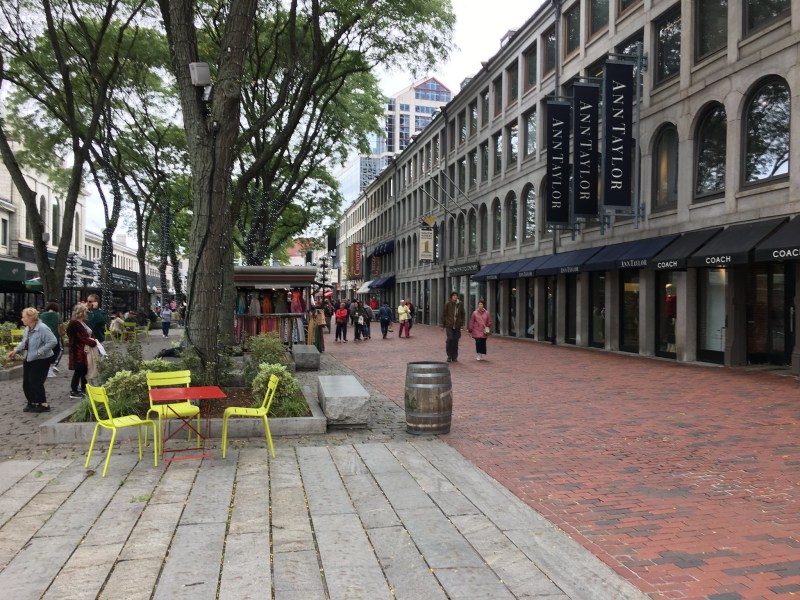The city will eventually destroy the suburb — by making it unnecessary to rely completely on a car.
Over the past decade, Americans are increasingly seeking out homes in places where they can get to their work and school, as well as their favorite stores, restaurants, and parks by walking and biking.
These walkable urban places — about 761 neighborhoods in the 30 largest metro areas in the country — accounted for virtually all new office and rental multi-family construction while sprawling suburban districts around the country's major cities have added no new development, or even lost occupancy, since 2010, a new report found.
These neighborhoods comprise a meager 1 percent of these metropolitan regions' total area, but are so desirable that people are willing to pay 75 percent more to rent residential, retail and office space there, and 90 percent higher to own property in those hoods, according to the report, Foot Traffic Ahead 2019.
"These metros that have the most walkable urban real estate also have a tremendous premium for what people are willing to pay for rental estate and for sale," said one of the study's co-authors, GWU Center for Real Estate and Urban Analysis professor Christopher Leinberger. "Not only are people willing to pay a tremendous price premium, but this is also where the majority of net absorption of new space is going."
Rent prices in these neighborhoods rose 19 percent since 2010 — and not just in cities like New York and Los Angeles. Property values in pedestrian-friendly urban areas grew in every metro region in the country while properties in the suburbs have been depopulating, the study's authors found.
New York, thanks to an astounding 149 "walkable" neighborhoods, topped the list with 37 percent of its occupied properties located in walkable areas. Denver was second with 35 percent, followed by Boston (31 percent), Washington D.C. (30 percent), San Francisco (29 percent), and Chicago (29 percent)
At the bottom of the rankings was Las Vegas with only 3 percent of its real estate growth centered in pedestrian friendly neighborhoods, and only two walkable neighborhoods. Phoenix, San Antonio, Orlando, Tampa, San Diego, and Miami didn't fare much better.
But there's hope for cities looking to make a U-turn from catering too much to cars.
Detroit, Pittsburgh, San Diego, Baltimore, Cleveland, Las Vegas, and even Los Angeles made significant strides in the past decade to make their regions more walkable.
Residents are moving into homes and using office space in Detroit's walkable neighborhoods at nearly six times the rate in 2018 as they were in 2010. And people in Pittsburgh moved into properties in walkable areas four times as much over the same period, the report found.
Leinberger credits the knowledge economy for igniting job growth and a population boom in many of these regions,
"All of these metros that are scoring high lead because they’re the centers of the knowledge economy where you can exchange that knowledge easily and quickly," he said. "It allows rising companies to hire the people that they need to grow from existing companies that are there."
But those population shifts are displacing longtime residents from their homes and in search of more affordable places to live far from a region's central business district.
Yet Foot Traffic Ahead found that several cities with reputations for high property values and rapid gentrification, such as New York, Washington D.C., and Boston, still offered a combined cost of housing and transit at a lower value relative to the surrounding suburbs.
In New York, for instance, 39 percent of the earnings in households at or below 80 percent the median income in the city went towards rent — but only 9 percent was spent on transportation. In Washington D.C., 35 percent of earnings for similar families went toward housing, with 10 percent spent on transit.
A similar family in Los Angeles, on the other hand, spent 42 percent of its earnings on housing and another 18 percent of its paycheck to get around — making the region the least equitable place in the country to live.
LA's suburbs are slowly urbanizing thanks to its investment in expanded rail and bus systems. And other metro areas like Miami are making long-term investments in transit that could change how millions of Americans live and work in the 21st century.
"Cars are going to be around forever, but condemning people to having one choice is not what a capitalist society thrives on," Leinberger said. "It is very important for local regions to invest in rail transit, bus rapid transit, and bike lanes to give people options, particularly low-income people. But it’s really for everybody."






